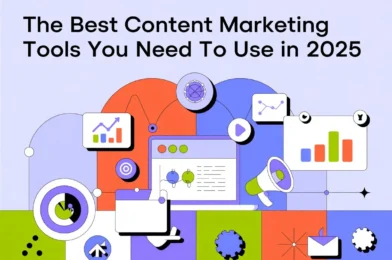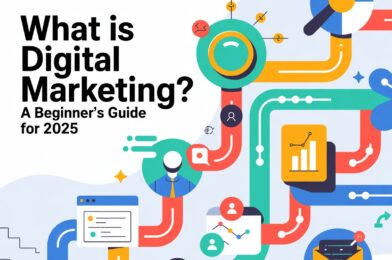Stop Guessing: How to Effectively Measure Your Content Marketing ROI
In today’s digital landscape, creating valuable content is essential, but simply publishing blog posts, videos, or infographics isn’t enough. To truly understand its impact and justify the resources invested, you need to measure its effectiveness. Effective [content marketing] goes beyond just creation; it demands rigorous analysis to prove its worth and guide future strategy. If you’re pouring time and budget into content without tracking its return on investment (ROI), you’re essentially navigating without a map. This guide will walk you through the essential steps and metrics to accurately measure your content marketing ROI.
Why Measuring Content Marketing ROI is Non-Negotiable
Tracking the ROI of your content efforts isn’t just a ‘nice-to-have’; it’s crucial for several reasons:
- Justifying Budgets: Demonstrating positive ROI provides concrete evidence to stakeholders (like your boss or clients) that content marketing is a worthwhile investment delivering tangible business results.
- Optimizing Strategy: Understanding which content formats, topics, and channels drive the best results allows you to refine your strategy, double down on what works, and eliminate ineffective tactics.
- Proving Value: Measurement connects content activities directly to business objectives like lead generation, sales, and brand awareness, proving its strategic importance.
- Securing Buy-In: Data-backed results are far more persuasive than anecdotal evidence when seeking buy-in for new content initiatives or increased resources.
According to research highlighted by the Content Marketing Institute, marketers who consistently measure ROI are often more successful in achieving their objectives.
Key Metrics for Tracking Content Marketing Success
Measuring content ROI involves tracking various metrics across different stages of the customer journey. It’s rarely a single number but rather a collection of data points that paint a complete picture.
H3: Consumption & Engagement Metrics
These metrics tell you if people are actually finding and interacting with your content:
- Page Views & Unique Visitors: How many people are viewing your content? Are you attracting new audiences? (Track via Google Analytics)
- Time on Page: How long are visitors staying to consume your content? Longer times often indicate higher engagement and value.
- Bounce Rate: What percentage of visitors leave after viewing only one page? A high bounce rate might signal irrelevant content or a poor user experience.
- Social Shares & Comments: Are people sharing your content on social media or engaging in discussions? This indicates resonance and reach.
- Scroll Depth: How far down the page are users scrolling? This helps understand if they are consuming the majority of your content.
H3: Lead Generation Metrics
This is where content starts translating into potential business opportunities:
- Conversion Rate: What percentage of content viewers take a desired action (e.g., downloading an ebook, signing up for a webinar, filling out a contact form)?
- Leads Generated: How many new leads can be directly attributed to specific content pieces? (Use unique tracking URLs or UTM parameters).
- Cost Per Lead (CPL): How much does it cost to generate one lead through your content marketing efforts? (Total Content Cost / Total Leads Generated).
- Lead Quality: Are the leads generated from content relevant and likely to convert into customers? (Often assessed via lead scoring in CRM systems).
H3: Sales & Revenue Metrics
These are the bottom-line metrics that truly demonstrate financial return:
- Sales Conversions: How many leads generated from content eventually become paying customers? (Requires tracking leads through the sales funnel, often via CRM integration).
- Revenue Attributed to Content: What is the total sales revenue generated from customers who initially engaged with your content?
- Customer Lifetime Value (CLV): Does content consumption correlate with higher CLV? Customers nurtured through valuable content may be more loyal and spend more over time.
- Calculating Basic Content Marketing ROI: A common formula is: ((Sales Revenue Attributed to Content – Content Investment) / Content Investment) * 100%.
Remember that attributing sales directly to a single piece of content can be complex due to multiple touchpoints in the buyer journey. Utilize attribution models (first touch, last touch, multi-touch) available in analytics platforms to get a clearer view.
Tools and Techniques for Effective Measurement
You don’t need overly complex systems to start measuring. Here are some essential tools:
- Google Analytics: Indispensable for tracking website traffic, user behavior, page performance, and goal conversions. Learn more about setting up goals directly from Google’s documentation.
- CRM System (e.g., HubSpot, Salesforce): Crucial for tracking leads through the sales funnel and attributing sales back to specific marketing campaigns, including content.
- Marketing Automation Platforms: Tools like Mailchimp, ActiveCampaign, or HubSpot help nurture leads generated from content and track their engagement over time.
- UTM Parameters: Add these trackable tags to your URLs shared in campaigns (social media, email) to precisely identify traffic sources within Google Analytics.
- Search Console: Monitor organic search performance, see which queries drive traffic to your content, and identify technical issues.
Consistently using these tools and establishing tracking processes from the outset is key to gathering meaningful data.
Overcoming Measurement Challenges
Measuring content ROI isn’t without its hurdles:
- Attribution Complexity: As mentioned, customers interact with multiple touchpoints. Choose an attribution model that makes sense for your business, but acknowledge its limitations.
- Long Sales Cycles: For B2B or high-value products, the journey from initial content consumption to sale can take months or years, making direct ROI calculation slower. Focus on leading indicators like lead generation and engagement in the interim.
- Measuring Brand Awareness: Quantifying the impact of content on brand awareness is notoriously difficult but can be inferred through metrics like branded search volume, direct traffic, and social mentions over time. Resources like Moz’s guide on brand awareness can offer insights.
Don’t let these challenges deter you. Start with the metrics you *can* track reliably and gradually build sophistication into your measurement approach.
Conclusion: Start Measuring, Start Improving
Measuring your content marketing ROI is fundamental to building a sustainable and effective content strategy. By moving beyond vanity metrics and focusing on data that connects content to tangible business outcomes – like leads and sales – you can prove its value, secure ongoing investment, and continuously optimize your approach for better results.
Don’t operate in the dark any longer. Implement the tracking methods and focus on the key metrics discussed here.
Ready to take control of your content performance? Start by setting up conversion tracking in your analytics platform today and identify one key content piece to analyze its contribution to your business goals.
In conclusion, measuring your content marketing ROI isn’t just a best practice; it’s a strategic imperative for truly understanding the value of your efforts and steering them towards success. Accurate data empowers you to refine your strategies, justify your budget, and demonstrate the tangible impact of content on your bottom-line business objectives.
Don’t leave your results to chance. Start implementing these steps and tracking your key metrics today to see firsthand how content contributes to your business growth.
And as you focus on measuring content performance, remember that distributing that content effectively and nurturing the leads it generates are vital parts of the process. To learn more about optimizing one of the most crucial channels for distribution and lead engagement, check out our detailed article on Email Optimization Strategies to enhance your overall marketing campaign effectiveness.

